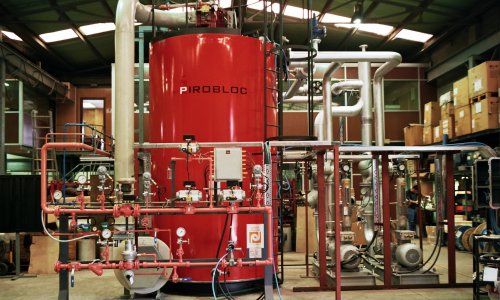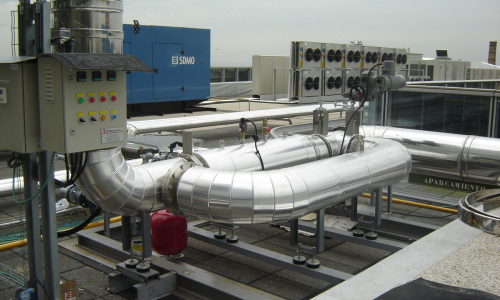This is due to the fact that there is not a change of phase from its liquid form and to the fact to work in a closed circuit.
But, today we want to focus ourselves in the type of specific heat insulation recommended to isolate the thermal fluid facilities, existing in the market multiple products for it, between which the mineral wools (rock wool), the plastic foams, products with cellulose, etc., all of them with the basic characteristic to avoid losses of heat from the heating fluid, to guarantee the yield and good operation of the installation, avoiding accidents and expensive energy losses, avoiding a greater environmental contamination and global heating.
In our case, it is important to consider the working temperature of the process and the diameter of the installation piping, recommending the following:
We will use casting dies in pipes of small and medium diameter, due to the concentric disposition of fibers. Therefore, the thickness of the casting dies would not have to be inferior to 60 mm for the pipe until DN-65, being of 80 mm for the pipe of greater diameter. The use of the rock wool is recommended in higher diameters of the previously mentioned ones, and for working temperatures over 200ºC.
In order to extend the previous information, you can consult the norm UNE 9310 that applies in Spain and that informs into the minimum thicknesses of isolation according to the diameters and temperatures of work.
Please, remember that it is not necessary to isolate the expansion and collecting tanks in the thermal oil facilities.
Please, also remember that the insulating wools use noninflammable materials and of a minimum calorific power, being against the propagation of fires. If we have high working temperatures or increases of temperature in an installation, will have to choose high density (HD) rock wools for our insulation.
To finish, as habitual norm and with the object of calculations, it is used the following reference: the temperature of wall of a heat consumer machine, of a thermal oil heater, of the piping, etc., does not have to surpass in 30ºC the room temperature.
See you next time. Read More!





